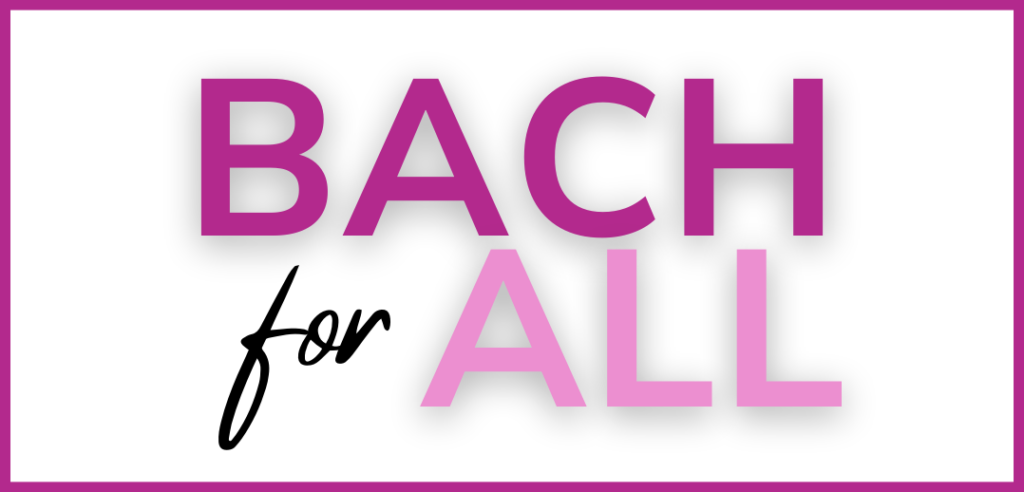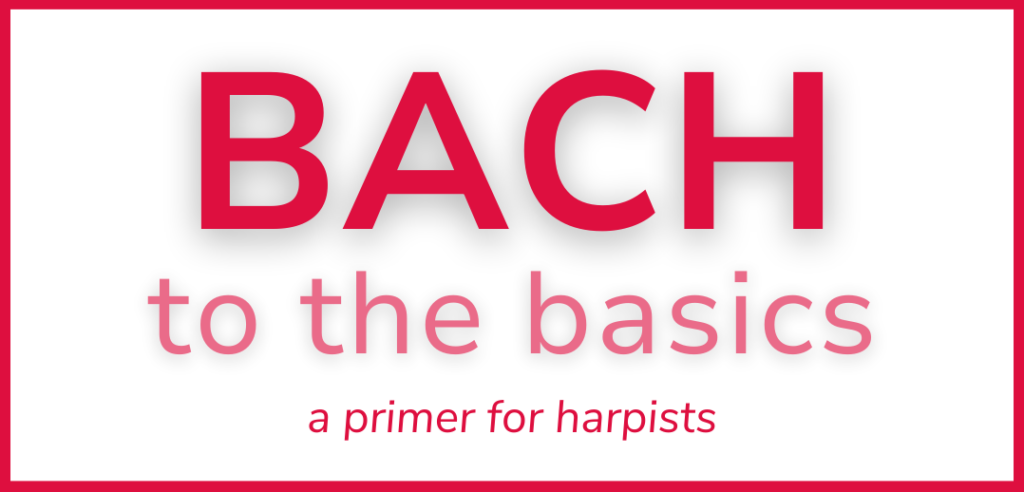(Download this issue (right) to see a comparison chart of metronome apps at a glance.)
Smartphone apps help us do everything from order pizza to check the weather. So why not use an app to help you count? Our team of testers evaluated eight metronome apps to determine which apps are both user friendly and useful to harpists. The apps range in price from free to $4.99, and, at the time of testing, all had ratings of four stars or higher in the Google Play and Apple App stores. Don’t see your favorite app? We only tested apps that work on both Android and iOS operating systems. Our testers compared the same features in every app on both operating systems, and rated each app on a scale of 1–5. Neither the Harp Column nor the app testers were paid to endorse any particular app.
 James Scully is an 11-year-old harp student in his third year of lessons.
James Scully is an 11-year-old harp student in his third year of lessons. Kela Walton is a professional harpist and teacher in South Carolina.
Kela Walton is a professional harpist and teacher in South Carolina. Phala Tracy teaches Suzuki harp and music theory at Studio Fidicina and is adjunct faculty at Gustavus Adolphus college. She’s an active performer in the Twin Cities.
Phala Tracy teaches Suzuki harp and music theory at Studio Fidicina and is adjunct faculty at Gustavus Adolphus college. She’s an active performer in the Twin Cities. Nadia Pessoa is a professional harpist who plays with The Washington Ballet and other ensembles in the Washington, D.C. area.
Nadia Pessoa is a professional harpist who plays with The Washington Ballet and other ensembles in the Washington, D.C. area. Delaine Fedson Leonard teaches at the University of Texas Butler School of Music and is an active performer and Suzuki teacher- trainer in the Central Texas area.
Delaine Fedson Leonard teaches at the University of Texas Butler School of Music and is an active performer and Suzuki teacher- trainer in the Central Texas area. Kelly Evans is a music teacher who has been taking harp lessons for one year.
Kelly Evans is a music teacher who has been taking harp lessons for one year.
#1 Tempo by Frozen Ape

Favorite App Overall
Rating: 4.8
Price: $1.49 Android, $2.99 iOS
Our Harp Column testers like Tempo by Frozen Ape the best, with four out of five testers giving it their highest rating. All of our testers recommend it for everyone from students to professionals. “Everything is easy to find on one screen,” says 11-year-old harp student James Scully. Tempo’s intuitive functionality and visually pleasing design receive high praise. Adult student Kelly Evans comments, “All the settings are very clear, and I had no trouble finding every feature we tested. I love that there are many features without overwhelming the core objective of being a metronome.”
Like most of the features in Tempo, changing the BPM (Beats Per Minute) number is simple, intuitive, and efficient. A single tap on the + or – changes the tempo by 1 BPM, or users can hold down the + or – to change by increments of 10 BPM. On the phone, sliding a finger right or left over the BPM, or using the scroll wheel on the tablet, allows users to make quick adjustments over a large tempo range. This quick adjust feature was not obvious to some testers, and all of our testers lamented the inability to simply type in the BPM. We like how the Tempo app clearly lists the Italian tempo markings in addition to the BPM number. This is a feature other metronome apps often lack, and a useful one if you don’t know the BPM for allegretto off the top of your head.
As with all the apps we tested, Tempo has a “tap to find the BPM” feature, or as we call it a “BPM detector.” Harp teacher and performer Delaine Fedson Leonard, who weighs in with her expert advice in our “Keeping the Beat” feature on pg. 16, says she has her students tap the beat into a metronome to check the regularity of their pulse. This feature also comes in handy when trying to determine the tempi in recorded music. In the phone version of Tempo it says “TAP.” The tablet version is less obvious, but users tap in the center of the BPM wheel. The BPM detector seems very accurate when we test it by tapping along with a separate metronome device. By default, the Tempo app is silent when users tap to find BPM, but you can change it to audibly click when you tap in settings.
In general, our testers agree it is easy to customize the sounds in this app. Washington D.C.-based professional harpist Nadia Pessoa says, “I liked that there were over a dozen options, with both percussive and digital sounds.” With 15 sounds to choose from, plus two voice counting options, all of our testers found a sound they liked and could hear while playing. It is also possible to customize each beat within any given meter with three possible sound options: a sound for accented beats, a different sound for unaccented beats, or silent. Our testers find the volume of the clicks to be loud enough and easily heard while playing. The volume is adjusted by either the slider in the app interface or buttons on the device. Choosing the sound could be a smoother process. Minneapolis-based professional harpist Phala Tracy finds that unless the metronome is already clicking when you go into the settings, “there is no way to test each sound before you choose it.”
All our testers agree Tempo makes it easy to customize clicks for subdivisions of the beat as well as the time signature. Evans explains, “Subdivision options are available once you choose your time signature, which I think is a good feature for beginners.” Pessoa adds, “The app’s layout is very helpful in this regard. It’s incredibly easy to select the subdivisions, and I love that the app offers an easy way to do both 3+2 and 2+3 subdivisions for 5/8.” Tempo may not offer as many subdivision choices as some of the more complex apps, but there are plenty for everyday use. Additionally, Tempo includes a setlist feature where users can save various tempo, meter, and subdivision settings with the title of their choice.
Tempo offers a full-screen display option as well as numerous visual beat options. The beats display as circles that light up, with several included color schemes to choose from as well as additional color schemes available for purchase. A pendulum, full-screen flash, as well as an option to disable all visuals, are available in settings or by swiping up on the display. Pessoa describes the visuals as much less jarring than in some of the other apps. “This would be a good option for someone who prefers more subtle effects,” she says. Additionally Tempo is one of only two apps we tested with a haptic vibrate feature. Available on the phone version only, users can choose between vibrating on accented beats or on every beat.
The app will stay open with the screen on all the time unless users change this default setting. Some may not like this, especially if it drains your battery when you’re not paying attention. Other users may think it is great, especially if you like to turn your metronome on and off a lot while practicing without unlocking your device. Like all the apps we tested, Tempo will keep clicking if you want to multitask and switch over to use another app.
The app developer, Frozen Ape, also offers a free Metronome Tempo Lite app and a more expensive Tempo Advance app. The free version includes many of the same features as Tempo but with fewer time signature and subdivision options. The setlist, full screen mode, and different interface options are also not available in the free version. If you want a metronome that offers complicated subdivisions, polyrhythms, and more customization, then Tempo Advance might be more your speed.
#2 TonalEnergy
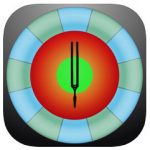
Favorite Metronome and Tuner Combo
Rating: 4.4
Price: $3.99
The saying “you can’t have it all,” seems to be true in the world of tuner and metronome combo apps. While TonalEnergy’s tuner did not earn high marks from our tuning app testers in the May/June 2020 issue of Harp Column, our metronome testers love TonalEnergy’s metronome features. The majority of testers listing it as their favorite combo app. Users can access the metronome two ways: as a smaller drop-down window from the upper right corner of the “Tuner” display screen, or by clicking the “Metro” icon along the bottom for a full screen metronome-only display. Whichever full screen function was last used will be the one automatically presented upon opening the app a second time. So if you only use it as a full-screen metronome it will open to that screen every time.
Changing the BPM is by far the easiest with TonalEnergy. “I can just key in the numbers, like a telephone. That’s easy!” exclaims Scully. Single taps on the + or – change the tempo by 1 BPM, or you can hold down the + or – for a scroll wheel. Sadly, TonalEnergy does not display the Italian tempo markings. Users can select from 42 time signatures and 28 beat subdivision options. Pessoa appreciates the simple user interface. “The layout is very straightforward, with both the meter and subdivisions available from an extensive drop-down menu.” The BPM detector clearly labeled “Tap Tempo” is easy to use and accurate.
With 25 sounds as well as one male and one female voice counting, users will find a sound they like. TonalEnergy is the only app we tested with the option to have a clicking sound and voice counting at the same time. “There was a nice variety of sounds, and it was very easy to customize them,” Pessoa notes. “The human voice counting on this app was the most realistic, and appealing.” If you want your metronome to sound like the Boss Dr. Beat, for a fraction of the price, while a high school band director from Texas also counts for you, look no further! As with the Tempo app, clicking on the beats in the display allows users to make each individual beat silent, accented, or normal sounding.
Users looking for helpful visualization of the beat options will love TonalEnergy. In full-screen mode, every beat covers about half the screen and lights up all the time. Plus there is an entire screen flashing option as well. “I like that you can turn it off without having to go into another menu—just touch the light bulb icon,” Tracy notes. Users can choose between full-screen flashing on all the beats or just the accented beats as indicated with a color coded background. To flash on just the accented beats, the accent icon must be selected as well. Our testers agree, the full-screen flash option may not be for everyone, but this app is way less disturbing than most other apps with the same function.
The user friendly design of TonalEnergy’s metronome app offers a good balance between simplicity and access to more robust features. Pessoa describes TonalEnergy as easy to use, while also allowing for some advanced customization and complex subdivisions. “The app might have a few too many options for absolute beginners, but should do most everything a college-level or professional harpist may need.”
#3 Metronome Beats by Stonekick

Best Free App
Rating: 3.6
Price: Free
Metronome Beats by Stonekick provides a simple interface and basic metronome options with a free price tag. With five ways to adjust the BPM, users can quickly find the tempo they want easily in this app. Buttons to adjust by +/- 1 and +/- 5. Users can scroll the BPM numbers up or down, use the slider, or hold down the numbers to type in the desired BPM. Metronome Beats includes Italian tempo terms, and our testers preferred scrolling the numbers to find a particular tempo term. Additionally, users can slow down the tempo by as much as 50 percent without actually changing the BPM setting, by using the percent buttons. While some might use this feature for slower practice in tricky passages, others might find it confusing. The phone version of the options menu auto-swaps to the percent menu once the metronome is clicking, then back to the beat options when the metronome is turned off. The tablet version shows both menus at all times.
Interestingly, there are no music notes found anywhere in the design. As a result, the time signature, note value, and subdivision options are not as obvious with Metronome Beats as in some other apps. The interface includes only “beats per bar” and “clicks per beat” with drop-down number menus. Some testers found this easy to understand, while others did not. Users can choose up to 16 “beats per bar” and up to 16 “clicks per beat” to achieve most time signatures and equal subdivisions. No complex subdivisions are possible. Users access the BPM detector by tapping the drum icon labeled “Tap Tempo,” and it seems to be very accurate.
Customizing sounds is cumbersome and requires navigation through multiple menu options. The beats are displayed as yellow and orange flashing lights. Users can customize each beat with a sound for accented beats (orange), a different sound for unaccented beats (yellow), or silent (mute icon). A red light pendulum bounces from side to side with every beat. Metronome Beats does not offer a full-screen flash, and our testers were not very impressed with the visual beat options in this app. “If I look at it while playing scales, it seems like too many things are moving,” Scully explains. “I get dizzy watching it all. If I were to play actual music, I don’t think it is bright enough to catch my eye.”
Metronome Beats offers a few other features including a “speed trainer” which allows users to increase or decrease the BPM by any increment over a customizable number of bars or period of time you choose. As with most free apps, there are annoying ads at the bottom of the screen which change every few minutes. They are just large enough and close enough to the play and stop button that it is easy to accidentally click the ad and leave the app, especially on a smaller device.
Metronome Beats is a solid choice for a free app with basic features. Pessoa notes, “I think this app packs a lot of options into a pretty clear interface.” An upgraded Metronome Beats Pro is also available for $3.99.
#4 Soundbrenner Metronome
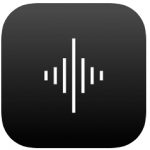
Honorable Mention
Rating: 3.4
Price: Free
The Soundbrenner Metronome presents another good option in the free apps category. Our testers found this app easy to use with a decent interface. Pessoa’s comments echo those of most of our testers: “It’s easy enough to set the tempo, beats per bar, and subdivisions, but the display is a rather low contrast—even though you can switch between a dark theme and a light theme.” Several of our testers preferred switching from the default dark display to the lighter theme to see the features more easily.
Users can turn the dial for quickly making large BPM adjustments, or click the arrows to adjust +/- 1 BPM. Tracy explains, “It is not immediately obvious to double tap [the number], but it works if you want to type to enter the BPM.” The tap BPM detector in this app receives mixed reviews from our testers. After only four taps it starts audibly clicking or counting depending on your sound setting. “The BPM detector also flashes as you tap,” Tracy points out, “and I couldn’t find how to make it not do that—yuck.” Our testers also had a hard time getting the BPM detector to match tempos while tapping along to another metronome device, leaving us to wonder about the accuracy.
While there are options to customize the sounds buried three layers deep in the settings menu, not all of our testers could find them or liked the sounds. “The default Woodblock sound was loud enough at full volume,” Pessoa explains, “but there seemed to be a lot of softer digital sounds that would easily be buried by the sound of the harp, or annoying chirpy video game sounds. The percussion samples all sounded compressed and less life-like. It’s great that there is a ‘digital voice counting’ option, but I found it distracting, especially when using subdivisions.” As with the top two apps we tested, each beat can be customized for multiple sound and silence options.
Soundbrenner Metronome offers lots of customization for visualizing the beat. The individual beat blocks flash all the time. In the settings, users can choose from a flashing screen, bold flashing numbers (though they flash on top of the regular display rather than as their own display), flashlight blinking, or any combination of the above. The full-screen and flashlight features blink on every beat as well as every subdivision regardless of tempo. This could be very distracting or even problematic for anyone sensitive to flashing lights. Pessoa clarifies, “I found the fact that the beat blocks always flash with every single subdivision fairly distracting. I’d prefer to hear the subdivisions, but only see the big beats.”
Our testers appreciate the clear time signature display, as well as 15 possible subdivision options including all the possible dotted eighth- and sixteenth-note combinations. Pessoa points out, “This app’s best features are the array of subdivisions you get to choose from, the fact that there are options for dotted rhythms, and voice counting.” Clicking past the ads for other Soundbrenner products every time you open the app is annoying, but some users might be willing to look past that since the Soundbrenner Metronome offers more features than most free apps.
#5 Tuner & Metronome by Soundcorset
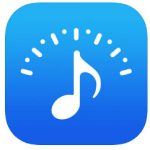
Rating: 3.2
Price: Free (monthly subscription option for no ads)
The Tuner & Metronome by Soundcourset ranked second in the Harp Column tuning app review, and our metronome testers agree this app affords a good choice for users in the market for an easy-to-use, free combo app. The metronome function offers basic features, and the majority of our testers agree this simple app is very easy to use, recommending it for beginners.
Users adjust the tempo two ways: +/- buttons for single digit BPM changes or using the slider for larger adjustments. Italian tempo markings are included, but there is no way to enter the BPM manually. If you touch the numbers, it gives a history of your recent tempo choices, which some testers like and others find odd. The number of beats per measure easily changes from one to eight, and in the default mode the pitch always sounds different on the downbeat. There are six possible subdivision choices, with the ability to create new ones, as well as some fun drum machine grooves. Only one of our testers found the option to customize sounds. Users must select the number of beats, then select the pencil icon to choose from six sound options for each beat. The BPM detector might not be intuitively found either. Evans explains, “I stumbled upon the BPM detector, but I assumed the drum symbol was to change sound at first, not the tap function.”
The visual beat options receive mixed reviews from our testers. The flashlight icon turns on the flashlight on the back of the device. The flashlight function on the iPad seems to lag and be out of sync, especially if users change the tempo while it is flashing. It is better on the phone, but the light flashes on with one beat and flashes off with the next, which users may find helpful or not depending on the tempo. There is also a full-screen icon option that displays numbers and colors. However, Pessoa says it looks more like a screensaver and is distracting. Evans loved the visual beat on this app. “The whole screen can be used, which is wonderful if you need it.” The Soundcorset metronome also offers a haptic vibrate option that works on some testers phones, but is not available in the tablet version. The vibrate function (indicated by a waves icon) only vibrates on every other beat regardless of tempo.
In general, our testers describe the metronome features in the Soundcorset app as basic, with limited ability to customize. Professionals looking for more features, customization, and control will find this app lacking. Beginners will likely find the app’s metronome and tuning features easy to use. With a free price point, Tuner & Metronome by Soundcorset is worth a try.
#6 Tunable

Rating: 3.2
Price: $3.99 Android, $4.99 iOS
After receiving high marks from our tuning app testers in the last issue, Tunable, unfortunately, earns only mixed reviews from our testers in the metronome department. Evans was positive, finding the metronome to be, “very intuitive, just like its tuning counterpart.” The display is minimalist with no landscape orientation, and some testers find the interface frustrating. Tracy laments, “The controls are tiny.”
Changing the BPM requires looking at two very different parts of the screen. Buttons located at the top left change the BPM +/- 1. These are also right next to the equally small beats and subdivision controls. On the phone, the + and – symbols make almost impossibly small targets for your fingers. Luckily, the clickable area actually extends to an imaginary square, which is highlighted on click, but users may not notice this unless they are on a tablet. It is easiest to use the slider at the bottom of the screen to select the BPM. “The options along the bottom go up by preset tempos,” says Tracy. “That’s kind of cool.” Our testers appreciate that Tunable not only provides the Italian tempo terms, but also their English definitions underneath in smaller font such as “andante—at a walking pace.” Tunable does provide the ability to type in the BPM, but not all of our testers found this feature.
The app’s BPM detector also misses the mark in terms of layout and design. Evans explains, “Though there is tiny light grey text saying ‘Tap Tempo,’ it just isn’t intuitive where to tap.” Tracy says she wishes the BPM detector was visually closer to the description of the tempo, pointing out that they were on opposite sides of the screen. Our testers were not able to get the BPM detector to match another metronome, bringing into question its accuracy.
Tunable’s minimal display offers no time signature icon to speak of, only beats and subdivision options. Up to 16 beats, but with only eight equal subdivisions, the options are somewhat limited. Scully confesses, “When I was trying to change the time signature I thought it was the subdivisions. I got a little confused by this.” Evans agrees, “It took a little playing around to figure out what I wanted.“ Selecting different sounds for each beat and subdivision is possible, but users must have the metronome running to hear different sounds as they test them. At first it seems like there are lots of different sound options. However, Scully describes them as, “all built around the same sound, just different pitches or computer-made beeps.” There are no voice counting options.
In full-screen flashing mode, the light flashes on with the beat, but it doesn’t seem to flash off with any sort of subdivision. Scully found the full-screen flashing option distracting, “It was like flashing party lights that annoyed me.” Scully also reveals, “It was easy to get distracted playing with the lights and sounds. My mom told me to just ‘turn it off.’” Evans concedes, “The visual beat could be too much for some people, but I liked it because I could always see it out of the corner of my eye.”
Pessoa describes Tunable as a good app for people who prefer minimal, clean design, but offers a word of caution. “It does not offer the flexibility and customization of some of the other metronome apps.” If you are looking for a tuner that also offers a basic metronome and a recording feature, Tunable is a nice combo app. The price recently dropped for iOS users from $8.99 to a much more reasonable $4.99.
#7 Time Guru

Rating: 3.2
Price: $1.99
Developer Avi Bortnick markets Time Guru as a metronome app that will help you strengthen your “internal sense of time.” The app offers the option to periodically and randomly mute beats, leaving the user on their own. Evans enjoys this feature. “The goal of building your own capability of keeping time is admirable, and I like that you can choose the level of muting.” A few of our testers describe playing harp while using the random mute feature as more challenging than they anticipated.
Time Guru may or may not be immediately user friendly. “This one was a disaster at first,” describes Tracy. “I nearly gave up. Once I was through the initial misery, though, it was super easy and I loved it.” Scully did not find the app intuitive either. “After a few tries I was able to find the beat subdivisions. I couldn’t find the time signature part. I had to go to info (the ‘?’ icon in settings) to find how. I didn’t understand how to delete the extra beats. It was not as user friendly for a kid.”
Our testers agree it was easy to customize the sounds in Time Guru. Pessoa likes that there is a preview of each sound. “This is the only app to include human voice counting in different languages, so that’s impressive!” Our testers describe the interface as simple but also clunky. Tracy says, “This one is kind of a diamond in the rough. Stick with the ‘get to know you’ process, and you might like it a lot.” Buyer beware: the phone and tablet versions of this app must be purchased separately, rather than automatically working on multiple devices. This app is definitely different, and users might want to watch a video tutorial before purchasing.
#8 Metronomics

Rating: 2.4
Price: $4.99
Our testers agree Metronomics offers some interesting features in a convoluted and intimidating interface. When users first open the app they are led through a lengthy tutorial that the average metronome user may not have the patience to actually study. “The tutorials are definitely needed, and I would say there is a pretty steep learning curve,” explains Evans. “When I opened the app for the first time, there were multiple subdivisions already present, which I thought was not helpful. I understand the reasoning behind it was to show how much the app can handle, but for casual users it would be overwhelming.”
Metronomics is not intuitive. “It is loaded with options, but it seems like overkill if someone is only looking to be able to set the tempo and straightforward rhythms,” Pessoa admits. “The fact that a lengthy walkthrough is needed before you can use the app is an indication that it is complex and poorly designed.” Tracy explains, “It took a lot of messing with it to get it to click along on a simple time signature—or with no accents at all.”
Metronomics offers many percussion based clicking sounds as well as voice counting, but users must access two different menus to customize all the sounds. Choosing the time signature is easy, but choosing the subdivisions is complicated. Fortunately, users can save frequently used programs rather than having to create them every time. Like Time Guru, this app offers a beat “probability” slider which randomly mutes the beat or subdivision. Another fun feature is the ability to create midi sounding drum backing tracks.
Metronomics is the kind of app that users will either love or hate. If you want what Pessoa describes as “an extreme level of detail and customization” and are willing to spend some serious time with tutorials, then Metronomics might be for you. For most users, Metronomics is too complicated, and other apps may be a better fit. •







